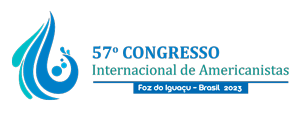| Dados do autor | |
|---|---|
| Nome | Lourdes Silvana Saturno |
| E-mail do autor | Email escondido; Javascript é necessário. |
| Sua instituição | Philipps-Universität Marburg |
| Sua titulação | Post-Doctor |
| País de origem do autor | Alemanha |
| Dados co-autor(es) [Máximo de 2 co-autores] | |
| Proposta de Paper | |
| Área Temática | 01. Antropologia |
| Grupo Temático | Beyond writing and iconography: coding |
| Título | Jaguar with Drawings and Gold Notebooks: Exploring Ideas on Power, Knowledge and Personhood among the Pume people of Venezuela |
| Resumo | This paper offers an analysis of how graphic designs (ŋoē) are understood by the Pume, an indigenous people of the Venezuelan Llanos. Ŋoē is a polysemic word that refers to an animal’s spots, to the letters that made up a text, to the drawings that are engraved on the rattles of religious specialists, to body paintings in ritual context and to scars or any skin injury in human beings. Nowadays, people use the verb root ŋoēpa- to translate escribir (to write). In ritual context – and mythic symbolism – the action of “writing” is achieved by knowledgeable human beings and spiritual beings. The most experienced religious specialists are those who are able to reproduce the images (ŋoē) of mythic and spiritual beings by engraving them over the surface of their rattles (ĉĩyokode, “heart made of totuma”). In everyday life, the ability to “write” is normally associated to non-indigenous people, more specifically to school teachers, servicemen, guerrillas and anthropologists. In both contexts the ability to “write” is characteristic of powerful and knowledgeable human and non-human beings. Furthermore, scars and skin injuries that form patterns (ŋoē) are usually understood as caused by sorcery – an activity that is mastered by people with knowledge – or by unwilling attacks perpetrated by another person’s soul. In such cases, the self (pumaia) of both people undergo a split into two parts pumetho and ikhara (emptied skin). The skin (i), I argue, is seen as the most external surface of the human body, the border between a subject’s inner life and his or her social life. On the basis of these ideas and using ethnographic examples, I analyze the use of writing symbolism as well as the action of writing itself as understood among the Pume to address two issues: (1) how they understand the relationship between power and knowledge; (2) how such understanding is related to Pume notions of self and personhood. |
| Palavras-chave | |
| Palavras-chave |
|
